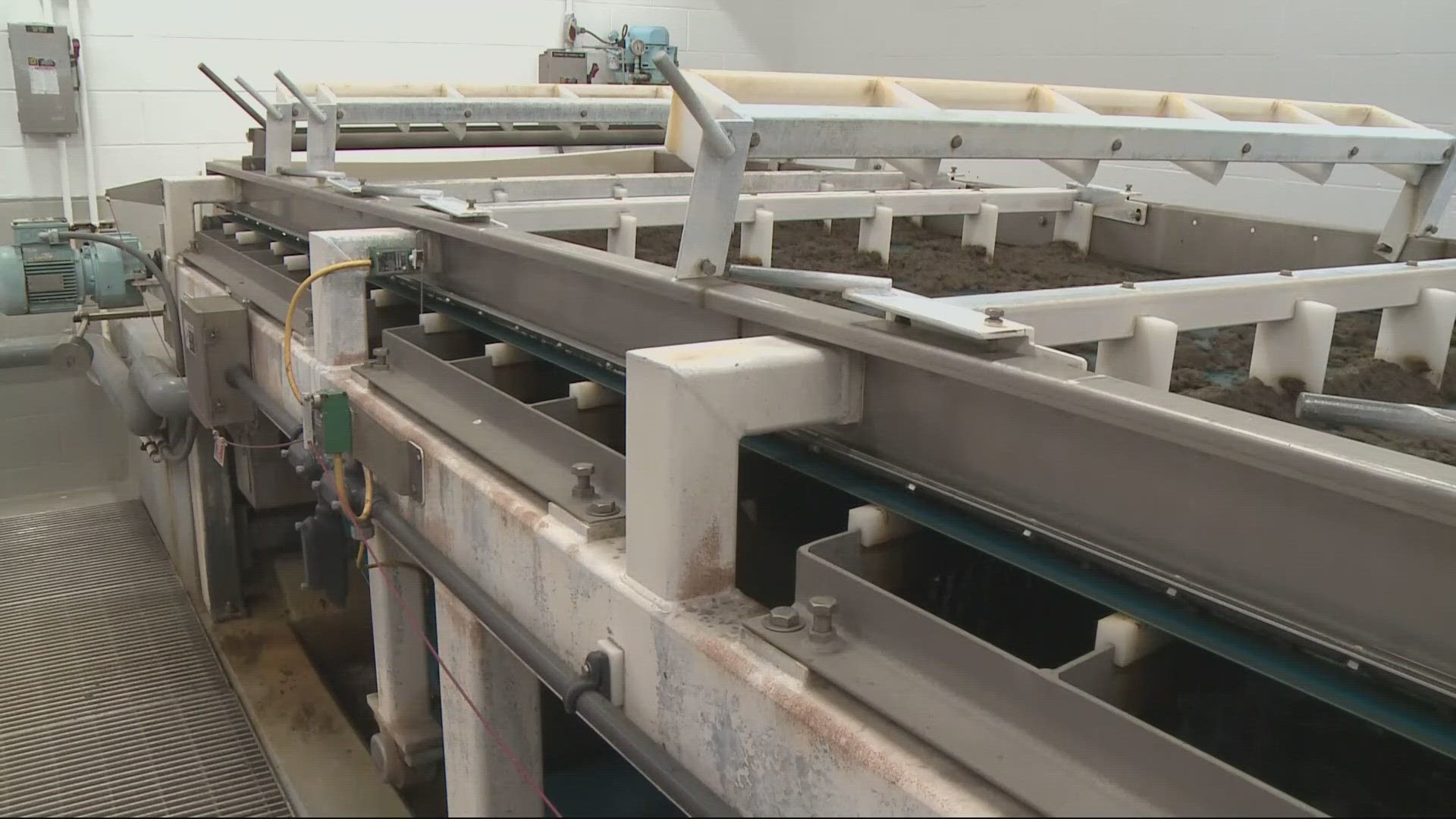PORTLAND, Oregon — Treated wastewater sludge is not something many people often think about, let alone as a climate opportunity. But the treatment process is a major source of carbon emissions, and McMinnville-based Solid Carbon is touting a new way to store that stuff in concrete, sequestering tons of CO2 that would otherwise be released by the decomposing waste.
"Think of everything that goes down the sewer pipe," said Solid Carbon co-founder John Mead. "The water is treated, discharged, the solids are pulled out. (Our process) thermally treats that, and turns it into our bio-lock patent-pending ad-mixture."
Mead and co-founder Michael Bernert have perfected a mixture using the remnant sewer sludge, which can be charred, repurposed, and have its carbon emissions sealed away.
“Our third-party validation of our E-P-Ds (Environmental Product Declarations) shows one pound of CO2 removed for every pound of our product that's put into a concrete mixture," Mead said.
The concrete has been tested by Oregon State University for strength and durability, and it's already in use — most recently in a new ramp at the Burnside skatepark. On a slightly larger scale, Solid Carbon poured a large concrete slab at the Remy Winery in Dayton, locking away five tons of CO2. That's still a small number, but it's the proof-of-concept for a much bolder ambition.
The sewer mixture is a form of biochar, which can be used as a carbon-capture tool.


"I like to tell people like my mother that it's burnt toast. So she gets that concept.," said Kathleen Draper, board chair of the International Biochar Initiative. "It's taking some type of organic material, putting it into a restricted air environment like an oven, cranking up the heat and burning off the water and most of the volatiles."
It's one of a handful of carbon removal technologies recognized by the Intergovernmental Panel on Climate Change. Biochar can be produced from just about any organic material, from used jeans to manure — or in this case, treated sewage.
The moonshot for Mead and Bernert is expanding their ad mix beyond treated sewer sludge to other types of biochar.
"As plants die and release their carbon into the atmosphere as part of the carbon cycle, you see the CO2 levels in the atmosphere rise up, and that's what we’re focused on, that biogenic carbon opportunity," Mead said, referring to the seasonal fluctuation of CO2 levels in the northern hemisphere due to trees dropping leaves in the fall, illustrated in this NASA video.
The world uses an enormous amount of concrete — and concrete itself is a big carbon emitter — so there's an ongoing opportunity to infuse large amounts of biochar and potentially have a big impact on greenhouse gas emissions.
"Every day globally, enough concrete is poured to cover the entire Portland metro area in a slab three inches deep," said Bernert said. "If we can turn that concrete into a carbon sink, it gives us an opportunity to have a gigaton scale climate solution."

